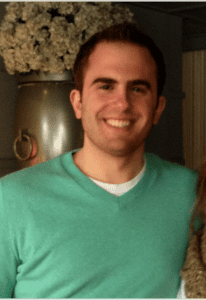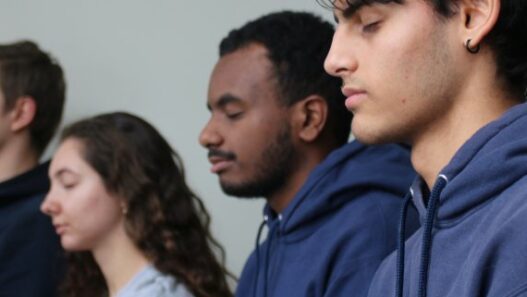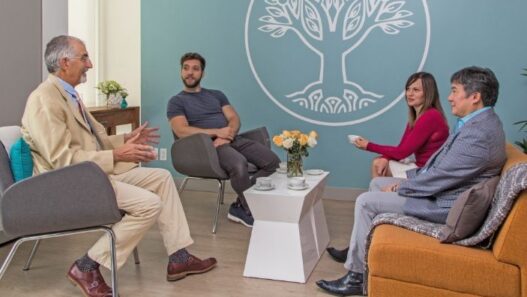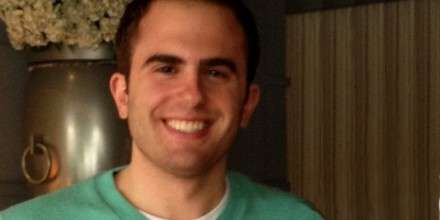 We continue our series of interviews with practitioners and teachers of Transcendental Meditation. Please meet Brian Levine, 25, from Los Angeles.
We continue our series of interviews with practitioners and teachers of Transcendental Meditation. Please meet Brian Levine, 25, from Los Angeles.
Majoring in psychology and neuroscience at Duke University, Brian’s research took him into non-pharmaceutical approaches to well-being. His findings were life-changing. Four and half years later, Brian is a passionate meditation teacher who helps others – from celebrities to homeless people, from businessmen to students – unlock their own infinite resources of well-being.
Brian, you’re a full-time teacher of Transcendental Meditation. Where do you teach?
BRIAN LEVINE: I teach TM full-time for the David Lynch Foundation in Los Angeles, CA. We have partnered with several organizations in Los Angeles, bringing TM to children in inner-city schools, the homeless, veterans with post-traumatic stress, and women and children who have been abused. On a day-to-day basis we are primarily providing the Rest-Time program to 1,000 students in four different schools.
What kind of schools are they?

BRIAN LEVINE: These are charter schools in different parts of Los Angeles. Before we started bringing meditation into those schools, you could perhaps have called them inner city schools. But when you start teaching meditation – even if the school is in the middle of a bad neighborhood, the whole environment transforms. So when you go into these schools now, it feels completely peaceful. And that’s really amazing.
What was the initial reaction from the staff and the student body when you started with the program?
BRIAN LEVINE: First, these schools had heard about Transcendental Meditation being taught at schools, and they contacted the David Lynch Foundation. So there you have a positive starting point.
Second, when we begin with the Quiet Time program at a school, we first train all of the faculty and administrators. In order for us to actually proceed teaching the students, there has to be a 100% buy-in from the staff. Not everyone has to learn TM, but they at least have to be supportive of it for the students.
What about the students? How many of them actually end up participating in the program and meditating twice during their school day?
BRIAN LEVINE: Even if the students don’t know much about TM, the introductory lecture usually gets them interested enough to sign up and try it. The school where I’m primarily working at has been running the Quiet Time program for a few years already. So it has become part and parcel of the culture of the school – around 90-95% of the student body ends up taking the course. And that happens with an explicit written consent from their parents.
Of course, occasionally a student doesn’t want to learn to meditate or they are simply not sure yet. And that’s completely fine. They can join in later, or not join in at all. There is absolutely no obligation to do it.
Yet what is significant is that once a student does sign up and decides to take the course, he or she is usually really happy about that choice and sticks with the practice.
How is it organized logistically? Do all the students get together in an auditorium, twice a day, for a joint meditation ’class’?
BRIAN LEVINE: No, they do it in their separate classrooms. We have two 15-minutes blocks, one around 9 AM, and the other one in the afternoon, around 1 PM.
The kids and staff who’ve been trained, they meditate, and the others – those who aren’t yet trained or who’ve chosen to abstain from the program – use this time period for resting.
How do you spend those periods?
BRIAN LEVINE: I either meditate together with the students and teachers in a classroom, or I go quietly around, seeing how it’s working. But we really want to empower the teachers so that they can take their class into the meditation and conduct it themselves. It works the best when the teachers behind it are passionate about it and know the real value of this program.
Can you describe this value in some quantifiable manner?
 BRIAN LEVINE: Sure. There’s a lot of data and numerical evidence from San Francisco, where the Quiet Time program has now been at schools for around 7 years. 65% decrease in violent conflict; 40% reduction in psychological distress, including stress, anxiety and depression; 86% reduction in suspensions over two years; 10% improvement in test scores — just to mention a few of the empirical findings.
BRIAN LEVINE: Sure. There’s a lot of data and numerical evidence from San Francisco, where the Quiet Time program has now been at schools for around 7 years. 65% decrease in violent conflict; 40% reduction in psychological distress, including stress, anxiety and depression; 86% reduction in suspensions over two years; 10% improvement in test scores — just to mention a few of the empirical findings.
The same is true about our project in Los Angeles. Suspension rates are being drastically cut, students’ academic performance is going up… For instance, I taught TM to a boy who was getting Ds and Fs. After a month of meditation, he was getting As and Bs. So the effect it’s definitely quantifiable!
And there’s nothing mysterious to it. When you give your body and mind this deep, unique type of rest, it simply refreshes the nervous system to such an extent that it brings real, immediate benefits.
Watch a David Lynch Foundation video about how the Quiet Time program is changing students’ lives at New Village Charter School in Los Angeles:



















